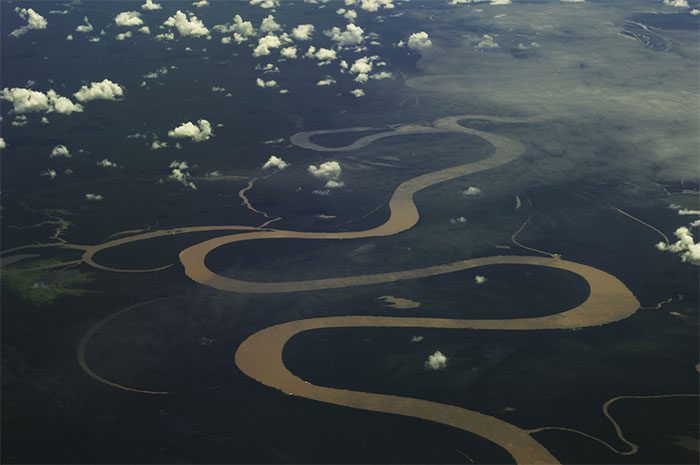These aerial waterways transport approximately 20 billion tons of water in the atmosphere each day. This figure surpasses the daily output of the Amazon River flowing into the ocean.
The Amazon Rainforest is renowned for its unique biodiversity and vast rivers. The Amazon River Basin is also the largest drainage basin in the world. The water flowing through the rivers in the Amazon accounts for 20% of the Earth’s freshwater supply. On the ground, the Amazon River and its tributaries carve out their paths. However, above the canopy, larger waterways are moving.

Amazon River Basin.
These invisible rivers are crucial for life on Earth. When rain seeps into the soil, trees absorb water through their roots and pump it up through their trunks to nourish themselves. Leaves and trunks release excess water in the form of vapor.
According to scientists, in the Amazon, a mature tree can release between 200 to 1,000 liters of water each day.
This collective release generates a phenomenon: massive, fast-moving, and continuous moist air currents above the canopy, which Brazilian climatologist refers to as “flying rivers.”
These aerial waterways transport approximately 20 billion tons of water in the atmosphere each day, a figure that exceeds the daily output of the Amazon River flowing into the ocean.
When these “flying rivers” encounter cold air masses, they become heavier and result in rainfall. They provide the majority of rainfall to the Amazon rainforest and the South American region; however, the existence of “flying rivers” is threatened by climate change.
The clearing of the Amazon for agricultural and industrial purposes has depleted the flying rivers, leading to droughts and higher temperatures across South America. If this trend continues, land areas could transform into deserts within a few decades.







































